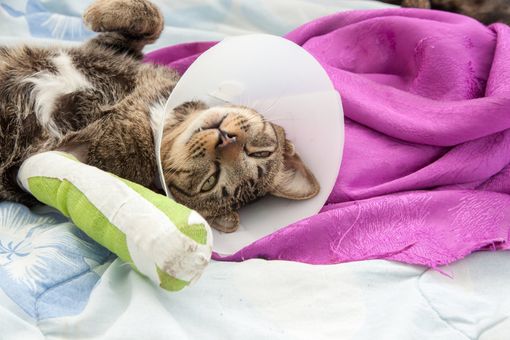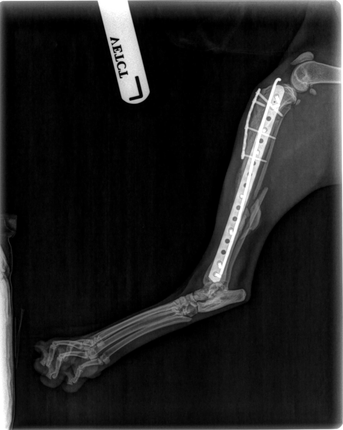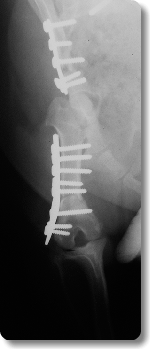Let's fix this....

Repairing broken bones in cats and dogs is a balance between many factors, including taking into account the our pets often won't rest in the way that we may, and they can't use crutches !
Many of us might have a few weeks resting on the settee, whilst our pets might well test out their repair with some athletic acrostics within a couple of days of surgery.
Repairing a broken bone can be a little like assembling a 3D jigsaw, and sometimes with many, many pieces, and they needed to be handled really gently to look after them.
The choice of technique will depend upon factors such the severity of fracture, which bone is affected, the age of the pet, its weight and any issues with other limbs.
Our pets can share their weight between four limbs, but only if they all work ! As has often been quoted by orthopaedic lecturers "dogs and cats have 3 legs and a spare" !
If an older dog breaks a front leg but already has severe arthritis in their hips and they are a little overweight, they will struggle more than a young healthier dog with the same broken leg and three good fully functional legs.
The guidelines used to be that we should literally piece the bone back together,
fragment by fragment but this would damage the tissues around the bone immensely.
We know that we need to balance the needs of the bone, and the needs of the tissues - muscles, tendons, nerves and blood vessels. They are all essential to healing. The plate would be applied tightly to the bone and would compress the two bone ends together.
So now we may not look to assemble the jigsaw, but just make sure we sort out the major pieces of the jigsaw - the corners, the length, the width, and then provide the best environment for the body to heal the bone.
The bone itself needs to be immobilised so that healing tissue can grow across the gap between the bones. A good blood supply is needed to bring nutrients and oxygen to cells so as to allow the tissue to repair. To reduce the gap between the sections of bone might damage this supply so there is always a element of compromise. It has been described as being the carpenter approach and the gardener approach, part assembly and part cultivation.
Plates & Screw

I would tend to try & use a plate and screws to fix most breaks these days whenever possible.
Read more ....
They provide strong support to the bone, can be used to compress broken section against section to speed up healing, and can make caring for your pet much easier following surgery.
The picture on the left shows a broken shin bone immediately after surgery with 2 plates and a pin down the centre
External fixation

Unlike plates and pins, the external fixator consists of a frame that sits outside of the body and provides a rigid scaffold for the bone
Read more.....
Pins connect to a bar on the outside and then these are drilled into the bone, holding the pieces in place.
They can seem a little odd at first and might make you feel a little queasy when you first see them but they are tolerated by pets incredibly well considering they have no idea what this contraption is for !
Pins
Pins are small steel implants that can be driven into bone.
Read more
We'll often use them along side other implants but occasionally they will do the job themselves despite their small size, especially when we have to anchor small broken pieces of bone back into place.


